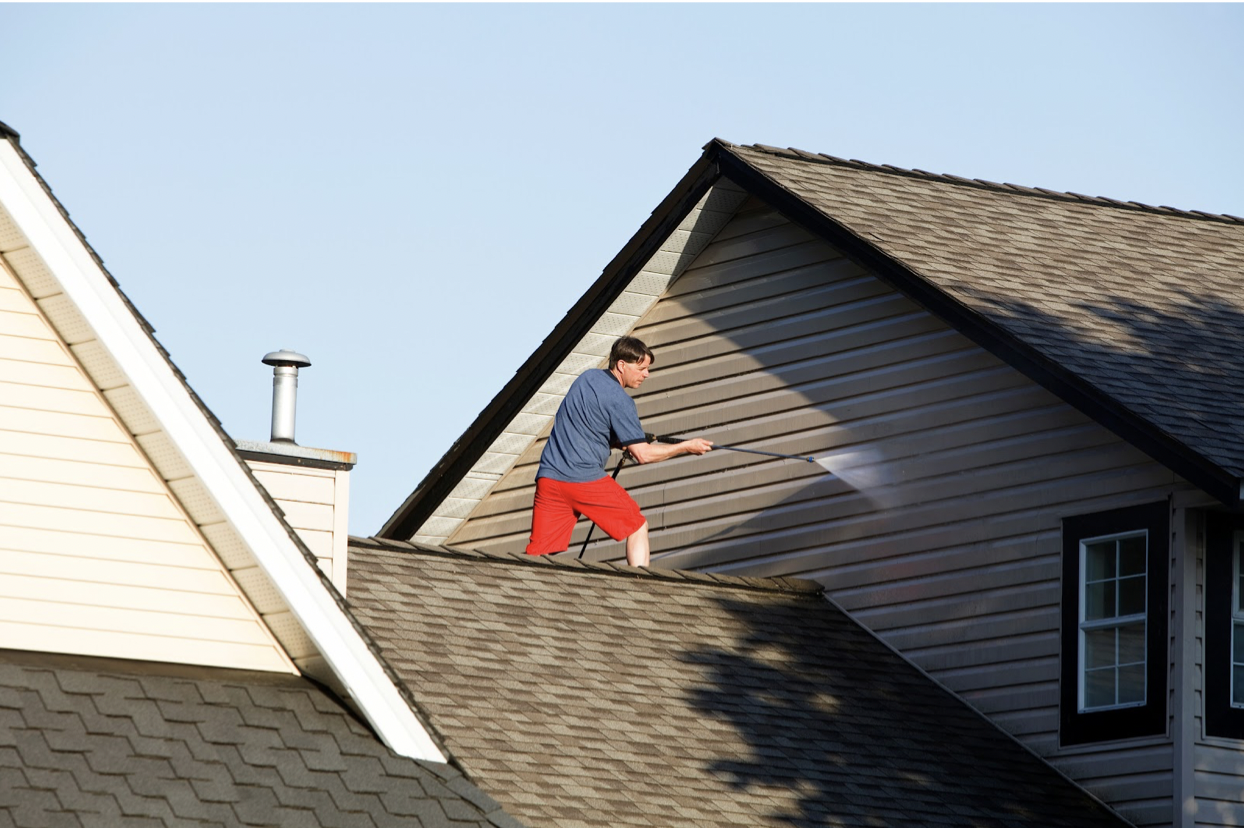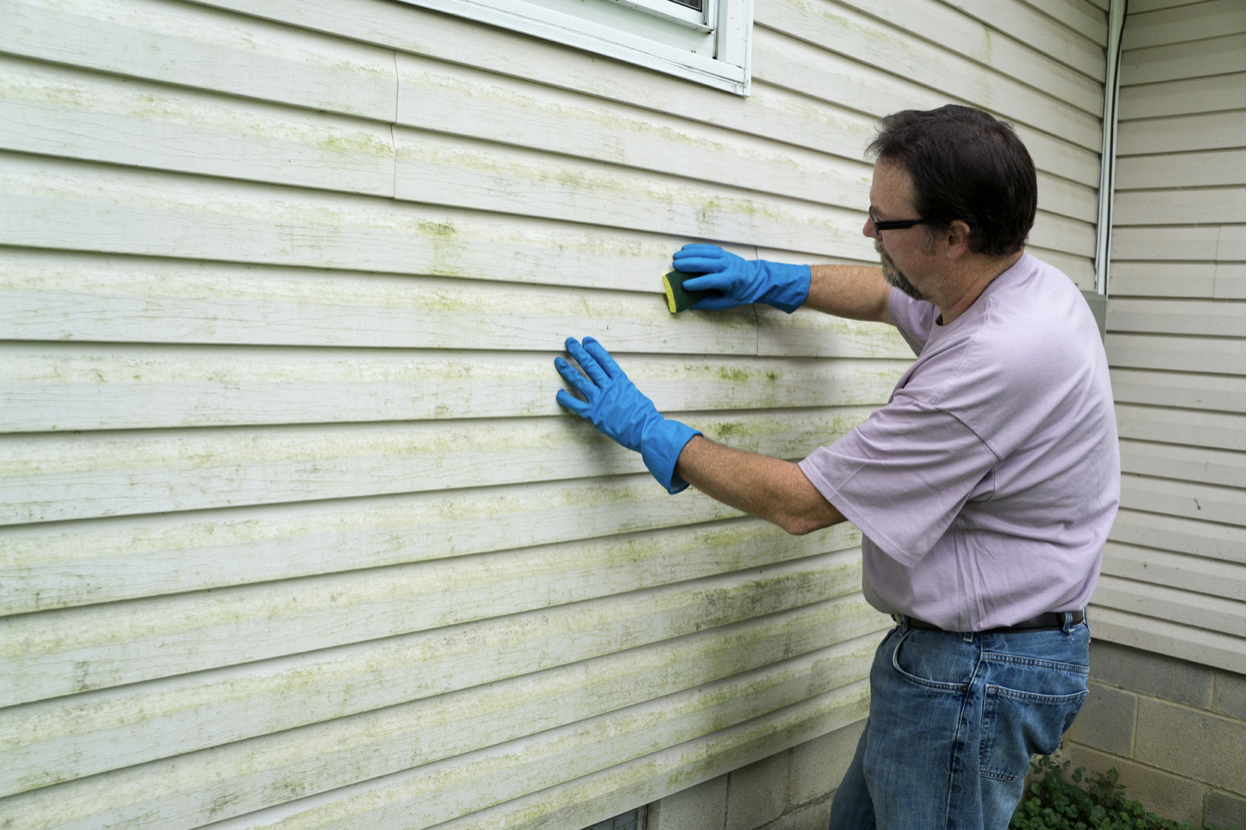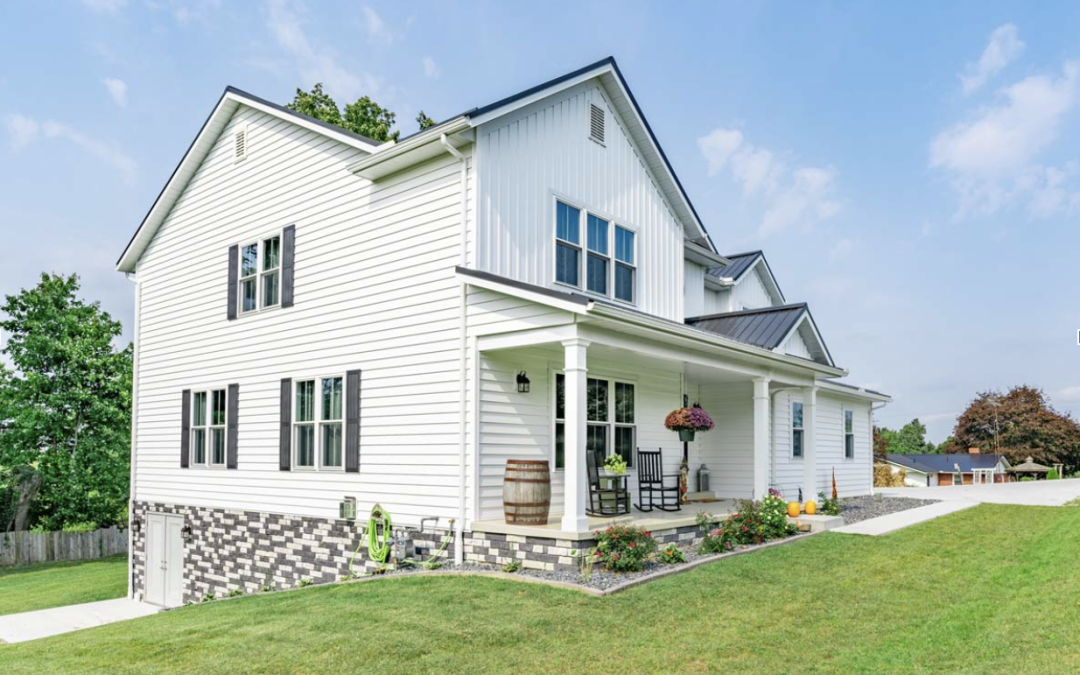Your home’s siding is not just about aesthetics – it’s also about protection. A well-maintained exterior safeguards your home from the elements, increases its value, and enhances its curb appeal. However, siding maintenance isn’t always straightforward, and questions often arise about cleaning.
That’s where we come in.
In this guide, we will help answer some common concerns to help you keep your home’s siding in top condition.
Question 1: How often should I clean my home’s siding?
Regular siding cleaning is essential to maintain your home’s curb appeal and protect it from environmental damage. The frequency of cleaning depends on several factors:
Siding Material: Different materials have different cleaning needs. Regardless, cleaning your siding once per year is a good rule of thumb. Ensure that if you start sooner or later than a year, that your siding is visibly dirty and needs cleaned. If you clean your siding too frequently, it is possible to damage it depending on the material.
Location: Homes in areas with high humidity or near the coast may require more frequent cleaning due to increased mold and mildew growth.
Local Climate: Homes in regions with heavy rain, pollution, or airborne debris may need more frequent cleaning.
Visual Inspection: Inspect your siding regularly. If you notice dirt, mold, or discoloration, it’s time for a cleaning.
For most homeowners, an annual visual inspection and cleaning should suffice, but adjust the frequency based on your specific circumstances.
Question 2: What are the best methods for cleaning different types of siding materials?
The best cleaning methods vary depending on the type of siding material:
Vinyl Siding: Mix a solution of mild soap and water, and use a soft-bristle brush or a pressure washer with low pressure. Avoid using harsh chemicals or high pressure, as they can damage the vinyl.
Wood Siding: Use a wood-safe cleaner or a mixture of mild detergent and water. Gently scrub with a soft brush, and rinse thoroughly. To prevent damage, avoid power washing wood siding.
Brick Siding: Mix a solution of water and mild detergent. Scrub the brick with a stiff-bristle brush and rinse. For tougher stains, consider a pressure washer, but use a low setting to prevent damage to mortar.
Always start cleaning from the bottom and work your way up, and test any cleaning solution on a small, inconspicuous area first.
Question 3: Can I pressure wash my siding?

A homeowner pressure washing their siding on their roof.
Pressure washing can be effective for cleaning siding, but it must be done carefully to avoid damage. Here are some tips:
Pressure Setting: Use a low-pressure setting to prevent damage. High-pressure settings can force water behind the siding, leading to mold and rot.
Maintain Distance: Keep the nozzle at least two to three feet away from the siding to avoid direct damage.
Angle and Direction: Always aim the pressure washer downward to prevent driving water behind the siding.
Siding Material: Be cautious with wood and delicate materials, as pressure washing can cause splintering and damage.
In most cases, it’s safer to use a gentle scrubbing method or hire a professional to pressure wash your siding.
Question 4: How can I prevent mold and mildew from growing on my siding?

A homeowner scrubbing their siding with a sponge.
Mold and mildew can detract from your home’s appearance and potentially damage your siding. To prevent their growth:
Regular Cleaning: Cleaning your siding, as mentioned in question 1, is the first line of defense. Mold and mildew thrive on dirt and grime.
Proper Ventilation: Ensure your home has proper ventilation to reduce moisture buildup. Repair any leaks or gaps in your home’s exterior.
Trim Trees and Shrubs: Trim vegetation near your home to allow sunlight and air circulation, reducing the chances of mold and mildew growth.
Use Mold-Resistant Paints: If you’re painting your siding, consider using mold-resistant paints to inhibit growth.
By following these preventive measures, you can keep mold and mildew at bay and maintain the appearance and integrity of your siding.
Conclusion
Maintaining your siding is not just about preserving its beauty; it’s about preserving your home’s integrity. Regular cleaning, proper care, and preventive measures are the keys to a long-lasting, appealing exterior. Remember, your home is your sanctuary, and keeping it in prime condition is a smart investment.
If you found this guide helpful, there’s more to explore on our blog. Also, if you have a friend or neighbor who would benefit from this blog post, please share it with them. Together, we can help our community keep their homes looking their best.
